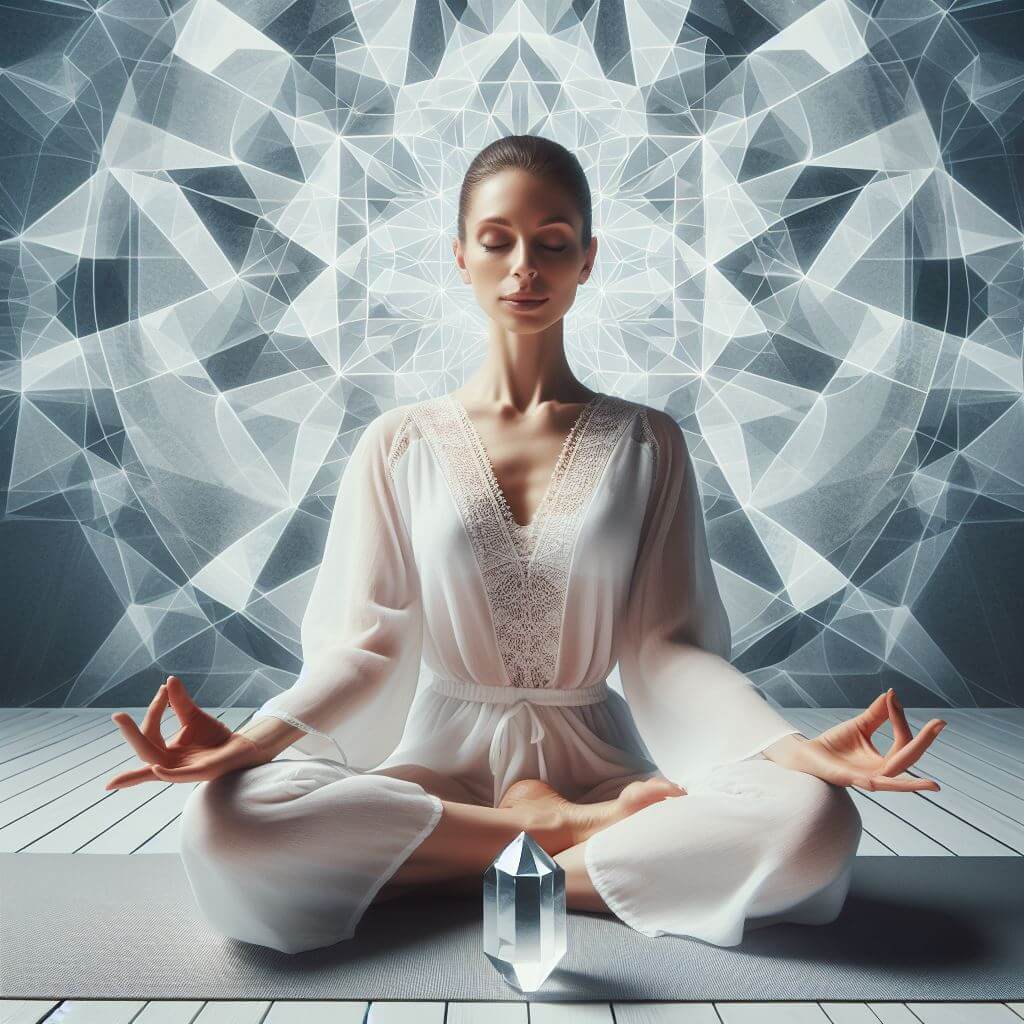The ancient practice of Kundalini Yoga is often shrouded in mystery, with its rich symbols of serpents and chakras capturing the imagination of those seeking spiritual awakening. At its heart, Kundalini Yoga is a transformative discipline that seeks to unlock and channel the dormant energy lying at the base of the spine, sometimes called the serpent power. This energy, which in Sanskrit is referred to as Kundalini, is conceptualized as a coiled serpent that when awakened, ascends through the spine to connect the individual with universal consciousness.
 The history of Kundalini Yoga is long and interwoven with the philosophical traditions of India, where it has been practiced for centuries. Rooted in the teachings of the Upanishads and the Yoga Sutras of Patanjali as well as the practice of Tantra, Kundalini Yoga encompasses a holistic approach to life and spirituality. It utilizes a variety of techniques including breath control, postures, sounds, and meditation to stimulate the flow of energy through the body’s energy centers, known as chakras.
The history of Kundalini Yoga is long and interwoven with the philosophical traditions of India, where it has been practiced for centuries. Rooted in the teachings of the Upanishads and the Yoga Sutras of Patanjali as well as the practice of Tantra, Kundalini Yoga encompasses a holistic approach to life and spirituality. It utilizes a variety of techniques including breath control, postures, sounds, and meditation to stimulate the flow of energy through the body’s energy centers, known as chakras.
The Kundalini Awakening Experience
The process of awakening the Kundalini is one of the most profound mystical experiences in the spiritual realm. Often depicted as a dormant coiled serpent at the base of the spine, once activated, this potent force starts its ascent through a series of energy centers or chakras in the body, leading to progressively higher states of consciousness. The chakra system consists of seven primary energy centers, each symbolizing different aspects of our existence, from the most primal to the most divine.
A Kundalini awakening can be an intense experience, and for many, it becomes a defining moment in their lives, marking a transition to a deeper understanding of the self and the universe. As Kundalini energy rises from the root chakra at the base of the spine upwards, it may clear blockages that have been formed over a lifetime, activating each chakra in turn. From the sacral chakra that influences our creative and emotional expression to the solar plexus chakra, which governs confidence and personal power, each center forms a vital component of the awakening process.
When this energy reaches the heart chakra, individuals may feel an overwhelming sense of love and compassion for all beings. As it continues to ascend, the throat chakra opens up channels for truthful communication. In the third eye chakra, intuition and insight begin to expand, culminating in a new level of awareness. Finally, when the Kundalini energy reaches the crown chakra, it can lead to a profound sense of connection with the divine, a unity with the infinite, and an indescribable feeling of bliss.
Encounters with these intense energies are usually accompanied by a multitude of sensations and phenomena. Physical manifestations may range from a gentle warmth to a powerful surge of energy that shakes the entire body. Alongside the sensory experiences, emotions previously tucked away might come to the surface. The practitioner might encounter joy and bliss in one moment and deep sorrow or fear the next, reflecting the purification process that is taking place within.
Not all experiences of Kundalini awakening are filled with light, however. It can challenge the practitioner’s mental, emotional, and physical constitution. Some experience what is sometimes referred to as a ‘spiritual crisis’, where the intensity of the awakening leads to profound existential questioning and upheaval. It is at this stage that the invaluable role of a seasoned teacher becomes evident, to help guide the practitioner through the maelstrom of transformation that Kundalini energy can unleash.
The Importance of Guidance and Preparation
A Seasoned instructor provides much more than instruction on physical postures and breathing techniques; they serve as a mentor and guide through the often turbulent inner changes that accompany this spiritual awakening. Teachers who have themselves experienced Kundalini awakening bring a depth of understanding and insight to the practice. They can help students recognize the signs of Kundalini rising, offer strategies to balance the energy effectively and provide support during periods of intense emotional release.
Preparation for awakening the Kundalini energy is both physical and mental. A foundation of physical strength and flexibility can help the practitioner to handle the surge of energy without discomfort or injury. Mental preparation involves cultivating an attitude of patience, openness, and steadiness. It’s also important to establish a regular meditation practice to enhance focus and mental clarity in preparation for the profound inward journey of Kundalini awakening.
 Another aspect of preparation is engaging in lifestyle choices that support one’s overall well-being and spiritual growth. This can include adopting a nutritious diet, maintaining a regular sleep schedule, and reducing stress through various relaxation techniques. Moreover, ethical living, grounded in principles such as truthfulness, non-harming, and self-discipline, creates a solid base for spiritual practices.
Another aspect of preparation is engaging in lifestyle choices that support one’s overall well-being and spiritual growth. This can include adopting a nutritious diet, maintaining a regular sleep schedule, and reducing stress through various relaxation techniques. Moreover, ethical living, grounded in principles such as truthfulness, non-harming, and self-discipline, creates a solid base for spiritual practices.
Safety is another critical reason why appropriate preparation and guidance are essential. The power of Kundalini is not purely metaphorical; in some cases, improper practices without a proper grounding in technique and philosophy have led to experiences that overwhelm the practitioner. These could manifest as intense physical sensations, psychological disturbances, or emotional volatility, often referred to in the literature as ‘Kundalini syndrome’.
The process requires a gradual build-up of practice while being acutely aware of one’s limitations. An adept teacher will customize practices to the individual’s readiness and progress, ensuring that the flow of energy is manageable and constructive. Moreover, they can provide insight into various practices that may be more suitable for the student’s unique constitution, ensuring a harmonious progression on the path to awakening.
It is also of prime importance to develop a supportive community or sangha. Connecting with others who are also on a spiritual path can provide encouragement, understanding, and companionship during challenging phases of growth. Shared experiences can offer solace and perspective, reminding practitioners that they are not alone in their struggles and triumphs.
The Benefits of Practicing Kundalini Yoga
Apart from the spiritual goals, Kundalini Yoga offers a plethora of benefits that improve daily life. Regular practitioners often report increased energy and vitality, improved mood and stress management, a stronger immune system, and enhanced mental clarity. The integration of body, mind, and spirit that is inherent in Kundalini Yoga promotes a sense of wholeness and peace that can contribute to improved interpersonal relationships and a more fulfilling life.
Kundalini Yoga can serve as a powerful tool for self-discovery and personal growth, helping individuals to identify and transcend limiting beliefs and patterns. Through the practice, many find a deeper sense of purpose and a connection to something larger than themselves, whether they define it as the divine, the universe, or simply life.
